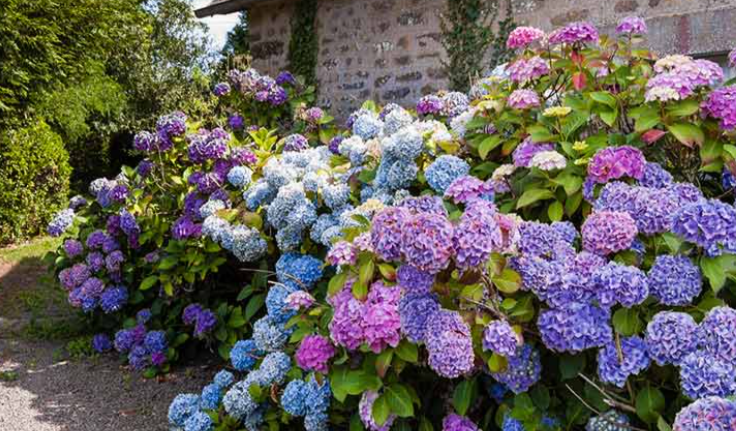Hydrangeas, with their stunning clusters of colorful blooms, are a beloved addition to gardens worldwide. However, to maintain their beauty and health, they require specific care and attention. In this guide, we will delve into the secrets of nurturing hydrangeas, ensuring they thrive and grace your garden with their splendor for years to come.
Understanding Hydrangeas
Before diving into care tips, it's essential to understand the different types of hydrangeas and their unique characteristics. From the mophead to the lacecap varieties, hydrangeas come in diverse forms, each with its own requirements for optimal growth and flowering.
Location and Light
Hydrangeas thrive in locations with well-drained soil and partial shade. While some varieties can tolerate more sun, excessive sunlight can lead to scorched leaves and diminished blooms. Aim for a spot with morning sun and afternoon shade, especially in hotter climates.
Soil and Watering
Hydrangeas prefer moist, fertile soil with good drainage. Regular watering is crucial, especially during hot, dry periods. Mulching around the base of the plant helps retain moisture and regulate soil temperature. However, be cautious not to overwater, as waterlogged soil can lead to root rot.
Pruning and Maintenance
Pruning hydrangeas is essential for maintaining shape and promoting vigorous growth. However, timing and technique vary depending on the type of hydrangea. Generally, it's best to prune after flowering, removing dead or weak stems and shaping the plant as desired. Avoid pruning too late in the season, as it may impact next year's blooms.
Fertilizing
Applying a balanced fertilizer formulated for flowering shrubs can enhance the growth and blooming of hydrangeas. It's advisable to fertilize in early spring before new growth emerges and again in mid-summer to support ongoing flowering. However, be cautious not to over-fertilize, as excessive nutrients can lead to lush foliage at the expense of blooms.
Changing Flower Color
One of the unique features of hydrangeas is their ability to change flower color based on soil pH. Acidic soil tends to produce blue flowers, while alkaline soil yields pink blooms. To alter the flower color, amend the soil accordingly by adding aluminum sulfate for blue hues or lime for pink tones. Regular soil testing can help maintain the desired pH level.
Protecting from Frost
In colder regions, hydrangeas may require protection from frost to prevent winter damage. Applying a thick layer of mulch around the base of the plant and covering it with burlap or a frost blanket can safeguard against freezing temperatures. Avoid pruning in fall, as it can stimulate new growth vulnerable to frost damage.
Conclusion
Nurturing beautiful hydrangeas requires a combination of proper care, attention to detail, and understanding of their unique needs. By providing the right growing conditions, from soil and sunlight to pruning and protection, you can enjoy vibrant blooms and lush foliage throughout the growing season. With the secrets unveiled in this guide, you're well-equipped to cultivate thriving hydrangeas that elevate the beauty of your garden.


